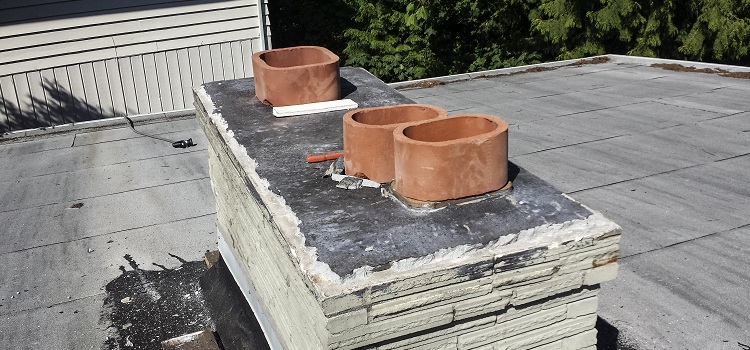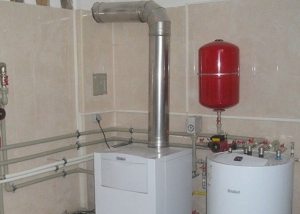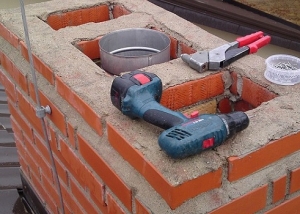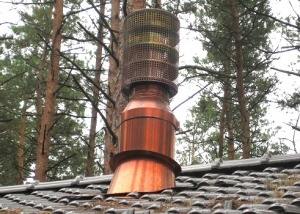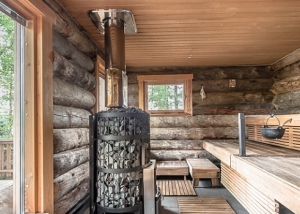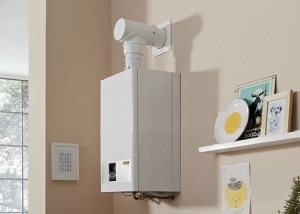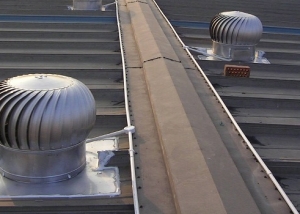Chimney casing is the installation of a pipe inside a brick chimney, which is made of fire-resistant and corrosion-resistant materials. The most popular for this is stainless steel. Pipes for sleeves can have a different cross-sectional shape depending on the size of the brick chimney structure: round, square or rectangular.
What is a brick chimney liner?
During the operation of brick chimney channels, soot accumulates in them, which affects the deterioration of traction in the system. Brick chimneys have rather rough walls, so they are prone to soot accumulation. Brick communications for the removal of combustion products are easily destroyed due to various negative factors affecting them. Consider these factors:
- temperature differences;
- condensation due to temperature differences during operation of brick chimneys;
- aggressive chemical compounds that are contained in smoke.
As a result of soot accumulation, the draft in the system deteriorates, which, in turn, affects the operability of the heating structure. As a result, the effect of reverse traction may occur, which will lead to smoke in residential premises. This effect poses a great danger to the health and life of the owners of the house, therefore, to ensure safety, it is very important to carry out preventive checks and cleaning measures in time.
Helpful information! Preventive checks are especially recommended immediately before the start of the heating season.
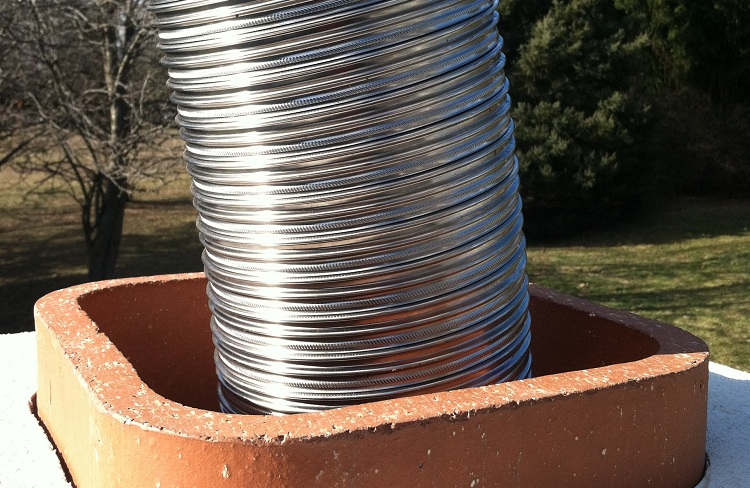
Installing a sleeve into a chimney does not entail costs such as a complete replacement of the chimney
There are two main ways to solve the problem of soot formation in a brick chimney channel:
- chimney liner;
- complete dismantling of the old canal and installation of a new chimney communication.
Since the second option is much more time consuming and entails large financial costs, many people spend the chimney sleeve.
Varieties of sleeve
As mentioned above, problem brick chimneys that are prone to soot accumulation can be completely dismantled and a new chimney can be carried out, however, this is a costly method in every sense. Complete re-channeling requires the cost of dismantling, purchasing new material, its delivery and installation. As a result, we get a rather large amount, which not everyone can afford.
Reconstruction of the chimney duct by means of a sleeve, a less expensive option that can solve the problem of lack of draft in the old communication. As a rule, the sleeve is a pipe with a round cross-sectional shape. Such sleeves are quite simple to install and can be assembled in almost any length.
The process of shelling can be done in three main ways, which are worth paying attention to. These methods differ from each other in pipe installation technology, materials used during installation, as well as in other, less significant nuances.
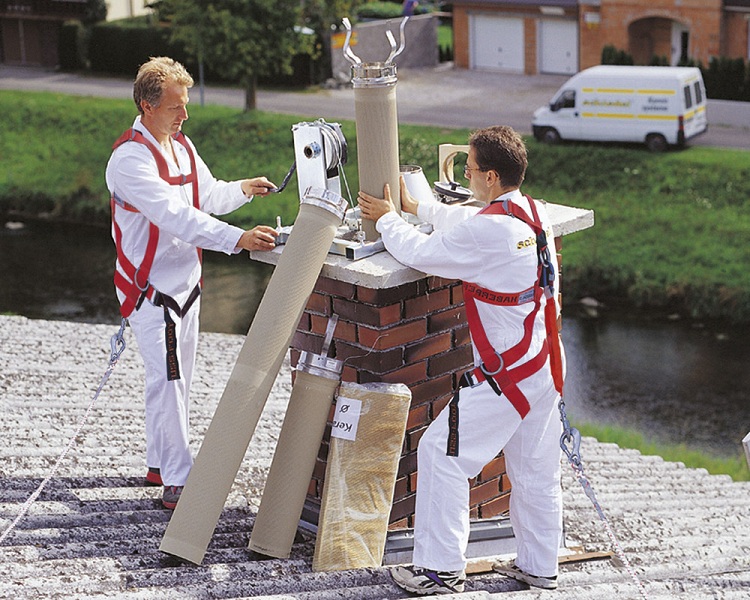
As a sleeve, you can use any pipe that is not amenable to corrosion - stainless, ceramic or even polymer
Consider three ways to sleeve an old brick chimney:
- Sleeving by means of liners made of polymer materials. This method involves installing plastic pipes inside the old brick channel. As a rule, such polymer pipes are reinforced with fiberglass and become plastic when heated. The plastic characteristics of such a material allow it to fill in the irregularities of the lumen of the brick structure. After the material cools down, the inner surface of the chimney communication becomes a smooth pipe. The wall thickness of such a sleeve is approximately 2 mm. The use of reinforced polymer liners has its drawbacks. The main disadvantage of this method can be called strict temperature limits. The extreme temperature limit for such a liner is 250 ° C, so the use of this method is relevant only for heating appliances that run on liquid or gaseous fuels (for example, a gas boiler).
- Flue pipe sleeve through steel modules. The very process of plugging with this method does not require any dismantling and is quite budgetary. The main advantage of this method is that the sleeve using steel modules is quite simple and can be handled by a person who does not have special building knowledge and tools. Steel modules are used for reconstruction: chimneys, stoves and fireplaces that operate on all types of fuel. The main disadvantage of this method can be called the fact that with the help of steel modules it is impossible to zagilizit twisting chimney communication.
- A third way is to flue the chimney using a corrugated pipe made of stainless steel. However, such material is recommended to be used only in cases where the heater has a low fuel combustion temperature. This is due to the fact that a stainless steel corrugated pipe has rather thin walls, which quickly burn out under the influence of high temperatures.
Important! Specialists categorically do not recommend using a stainless steel corrugated pipe to fit the chimney in a bathhouse due to the high temperature of fuel combustion in such a furnace.
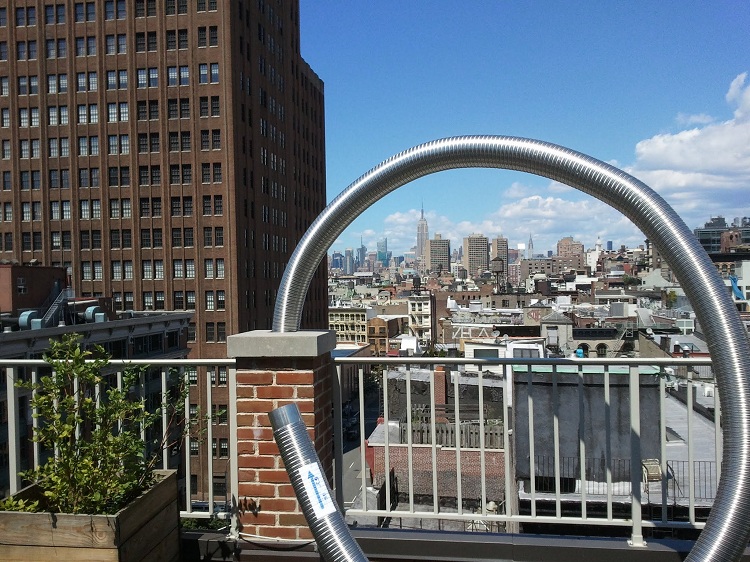
If the combustion temperature of the fuel is not high, then the chimney liner is allowed with a steel corrugated pipe
Another disadvantage of using a corrugated tube sleeve is that the walls of such pipes have a ribbed structure, which contributes to soot deposits in large quantities.
DIY smokestack
First of all, before the filling of the old brick chimney canal, it is recommended to carry out preparatory work. The preparatory work before the chimney flue includes the following steps:
- it is necessary to check the smoke outlet of the brick for pollution and damage;
- it is imperative to determine the size and shape of the cross-section of the sleeves for a particular case;
- The third thing that needs to be done before starting installation work is to prepare the workspace.
After the preparation for the sleeve is completed, you can proceed directly to the installation process itself, which is performed in the following sequence:
- First, a part of the flue duct is dismantled. The dismantled part of the channel depends on the specific case and is made along the length of the sleeve. The dismantling of a part of the chimney is necessary so that it is possible to make a plug and, in addition, for the installation of an inspection hatch in the future.
- Next, you need to install the sleeve inside the chimney structure. It is installed at a height that does not impede the quiet installation of the next sleeve.
- At the third stage, the jointing of the cartridges is performed. The joint seam is usually coated with a special sealant. Experts recommend the use of heat-resistant sealants that can withstand high temperatures without losing their qualities.
- Then the design of the two joined together sleeves rises to the required height and the installation of the following elements is carried out. This action is carried out until the chimney channel is covered at its full height. The billet, which is carried out from the bottom up, is relevant only for chimneys of small height, since the resulting pipe construction will have too much weight in the case of a long channel. For long channels, it is recommended to carry out top-to-bottom fittings. In this case, it is also worth remembering that under the lower sleeve you need to put bricks or a refractory block.
- At this stage, the space between the outer wall of the liner structure and the inner surface of the smoke-emitting brick structure is filled. The material for this can be any refractory heat insulator (for example, basalt wool).
- Then, laying is made with bricks of the previously opened chimney opening. This operation is the final stage of the sleeve.
The chimney sleeve is one of the options for the reconstruction of brick communications. The features of this process depend on the specific case, however, it must be remembered that all work is recommended to be carried out taking into account fire safety standards and rules in order to avoid the occurrence of undesirable emergency situations.
